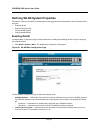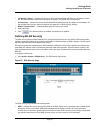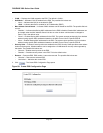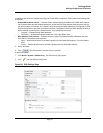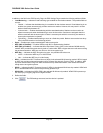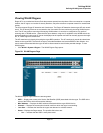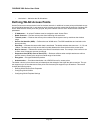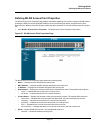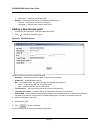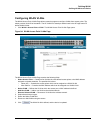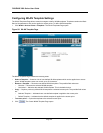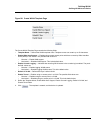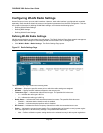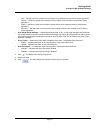
DXS/DWS 3200 Series User Guide
Page 150
– Unchecked — Maintains the WLAN stations.
Defining WLAN Access Points
Access Points act as communication hubs for wireless networks. In additional, access points provide both encryp-
tion and bridging between 802.11 and ethernet points. Access points also extend the physical size of wireless net-
works. When several access points are grouped, they allow network users to roam. Access Points contain the
parameters:
• IP Addresses — A unique IP address must be assigned to each Access Point.
• Radio Channels — Prevent access points from interfering with each other.
• Transmit power — Reduces the access point numbers and the system cost by maximizes the wireless
range.
• Service Set Identifier (SSID) — Defines the user WLAN name. The SSID establishes and maintains wire-
less connectivity.
• Data Rate — Indicates the rate at which data is transferred. The default wireless data rates are 1, 2, 5.5, and
11Mbps. The data rage can help ensure the link quality between the client device and the access point.
• Beacon Interval — Indicates the access point beacon transmission rates. For example, if the interval is set
to 20ms, then 20 beacons are sent per second.
• Request-to-Send (RTS)/ Clear-to-Send (CTS) — Reduces collisions when multiple stations are within a
specific common access point range but outside range of each other.
• Encryption — Encrypts WLAN data packets.
• Authentication — Provides authentication via a RADIUS server for access points.
The farther a device is from the access point determines the strength of the signal the device receives. The sys-
tem supports up-to 25 simultaneous access points. Each access point supports up-to 50 stations. This section
includes the following topics:
• Defining WLAN Access Point Properties
• Configuring WLAN VLANs
• Configuring WLAN Template Settings



